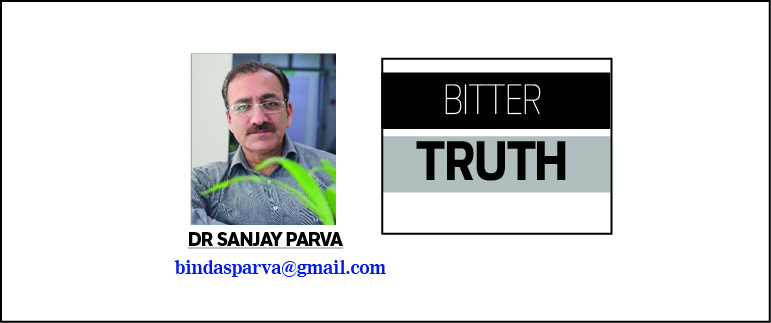By: Mukhtar Ahmad Qureshi
Aesthetic literacy, though often underemphasized, plays a vital role in education and personal development, influencing various dimensions of human life. This concept involves the ability to interpret, appreciate, and create aesthetically meaningful experiences in fields such as visual arts, music, literature, and even daily surroundings. Its importance lies in its impact on cognitive growth, emotional intelligence, and cultural awareness, making it indispensable for holistic development.
In terms of cognitive development, aesthetic literacy enhances critical thinking and problem solving capabilities. Exposure to different forms of art stimulates creativity and encourages expansive thinking, allowing individuals to perceive the world from diverse perspectives. Additionally, engaging with artistic expressions aids in building emotional intelligence by fostering an understanding of human emotions. Art’s ability to evoke deep feelings enables individuals to better express and manage their emotions, promoting mental well being.
In today’s interconnected world, aesthetic literacy plays a critical role in fostering cultural harmony. It equips individuals with the ability to appreciate and respect diverse artistic and cultural traditions, creating a sense of unity amidst diversity. Beyond the visual and performing arts, aesthetic literacy extends to language and communication. A person with aesthetic literacy can effectively convey thoughts with clarity, eloquence, and subtlety, enhancing their overall communication skills.
The benefits of aesthetic literacy are not confined to intellectual and emotional realms but also extend to improving the quality of everyday life. Whether it’s appreciating a beautifully composed piece of music, enjoying the elegance of well structured writing, or admiring the aesthetics of a well designed space, these experiences contribute to an enriched, fulfilling life. Moreover, it promotes innovation and creativity, vital in addressing complex problems. By encouraging individuals to think beyond conventional approaches, aesthetic literacy fosters unique and unconventional solutions.
Professionally, aesthetic literacy is an asset across various fields, such as design, marketing, and education. Individuals with an understanding of aesthetics often bring unique perspectives to their work, which can enhance creativity and problem solving in professional environments. This quality sets them apart in competitive industries and adds value to their contributions.
Integrating aesthetic literacy into education systems can transform learning experiences. Schools can include arts education in curricula, exposing students to visual arts, music, literature, and performing arts. Encouraging visits to museums, galleries, and theaters can deepen students’ exposure to diverse artistic traditions and broaden their understanding. Interdisciplinary approaches linking aesthetics with other subjects, such as history or science, can create a more engaging and holistic learning experience.
However, several challenges hinder the promotion of aesthetic literacy. Many educational institutions face financial constraints that limit their ability to invest in arts programs. Addressing this requires advocacy for the importance of aesthetic literacy and exploring creative solutions, such as partnerships with local art organizations or community-driven initiatives. Additionally, the emphasis on standardized testing often marginalizes arts education, treating it as non essential. Advocates must highlight how aesthetic literacy is integral to nurturing well-rounded individuals capable of navigating modern complexities.
The advent of the digital era has also shifted attention away from traditional art forms, posing another challenge. To bridge this gap, educators can leverage technology by integrating digital tools into arts education. Virtual reality experiences, online exhibitions, and interactive platforms can bring artistic expressions to students who may not have physical access to cultural institutions, thereby democratizing access to the arts.
Assessing aesthetic literacy requires innovative methods. Standardized tools can evaluate skills such as analyzing visual art, interpreting literary works, and engaging critically with music. Moving beyond traditional exams, portfolio based assessments allow students to showcase creative projects and demonstrate their ability to apply aesthetic principles practically.
Recognizing cultural diversity is crucial when promoting aesthetic literacy. Educational programs must move beyond Western centric perspectives and incorporate artistic traditions from various cultures. Facilitating international exchanges and collaborations can provide students with firsthand experiences of diverse aesthetics, fostering a global outlook.
Aesthetic literacy also extends beyond formal education. Encouraging lifelong engagement with the arts ensures that individuals continue to explore and deepen their aesthetic understanding throughout their lives. Technology plays a significant role in this process, as it enables greater access to artistic experiences. Online platforms, virtual exhibitions, and other digital tools make art more accessible to individuals regardless of their location or resources.
Promoting aesthetic literacy requires collective efforts from educators, policymakers, and society as a whole. By understanding its importance, addressing challenges, and embracing innovative solutions, we can prepare future generations to navigate not only the academic and professional worlds but also the rich and diverse realm of artistic expression that defines human culture.
Through a focus on aesthetic literacy, we can create a society that values creativity, embraces cultural diversity, and nurtures individuals who are intellectually and emotionally well rounded. It is not just an educational goal but a societal necessity to enhance our shared human experience.
(Writer is a Columnist and a Teacher. mukhtar.qur@gmail.com)




